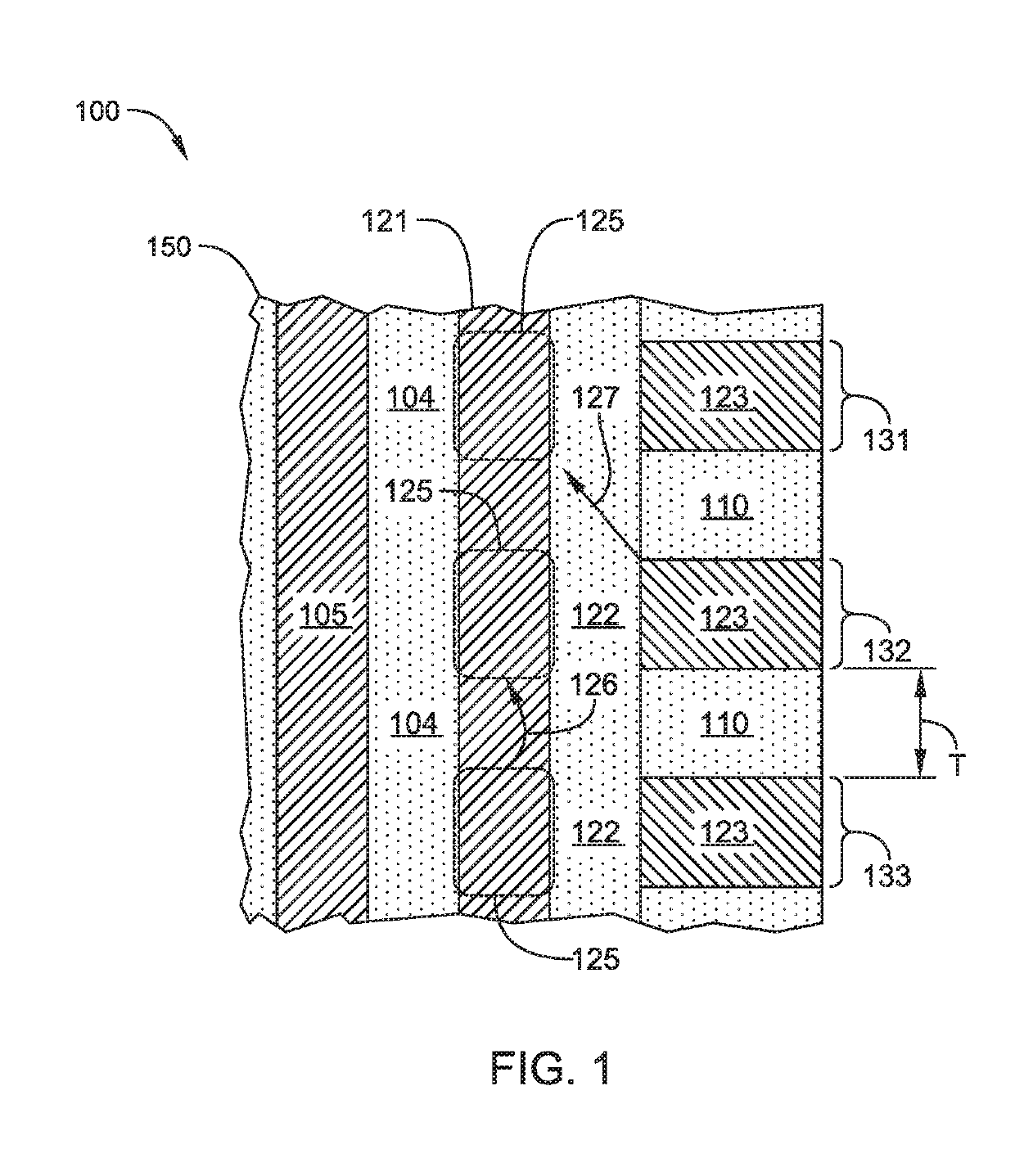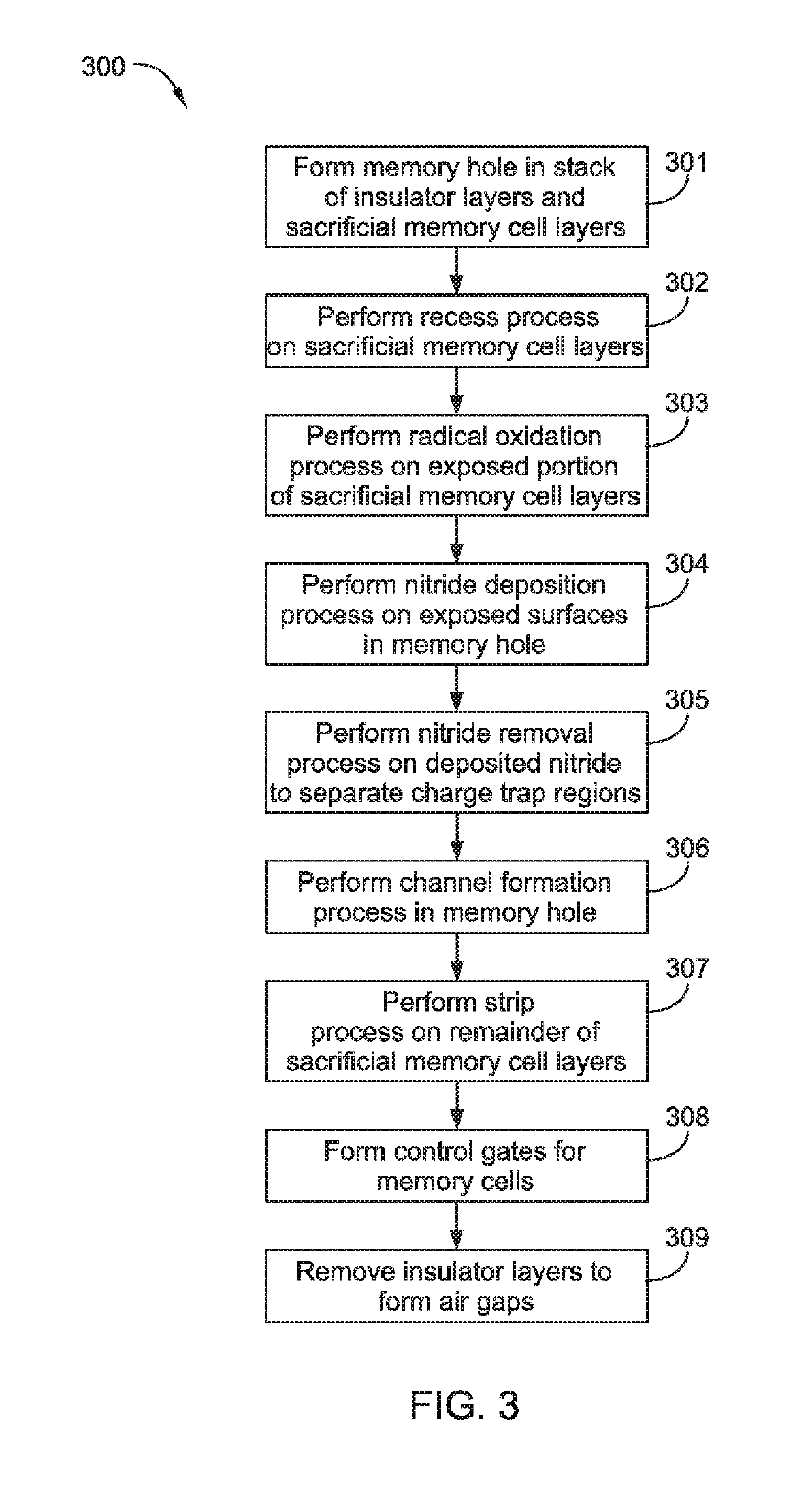Multi-layer stacks for 3D NAND extendability
a multi-layer stack and extendability technology, applied in the direction of semiconductor devices, electrical equipment, basic electric elements, etc., can solve the problems of layer thickness, high aspect ratio etching, and oxide quality (i.e. breakdown voltage), and achieve the effect of reducing the thickness of the layer, and improving the etching
- Summary
- Abstract
- Description
- Claims
- Application Information
AI Technical Summary
Benefits of technology
Problems solved by technology
Method used
Image
Examples
Embodiment Construction
[0017]Embodiments described herein relate to methods and materials for fabricating semiconductor devices, such as memory devices and the like. In one embodiment, a memory layer stack includes materials having differing etch rates in which one material is selectively removed to form an airgap in the device structure. In another embodiment, silicon containing materials of a memory layer stack are doped or fabricated as a silicide material to reduce sheet resistance of the silicon containing material. In another embodiment, a silicon nitride material is utilized as an interfacial layer between oxide containing and silicon containing layers of a memory layer stack to improve adhesion between the oxide and silicon containing layers.
[0018]In a conventional three-dimensional (3D) NAND memory device, the charge storage region of a memory cell may be susceptible to leakage of trapped charge into or out of the charge storage region of adjacent memory cells, compromising stored data, as illust...
PUM
| Property | Measurement | Unit |
|---|---|---|
| thickness | aaaaa | aaaaa |
| thickness | aaaaa | aaaaa |
| diameter | aaaaa | aaaaa |
Abstract
Description
Claims
Application Information
 Login to View More
Login to View More - R&D
- Intellectual Property
- Life Sciences
- Materials
- Tech Scout
- Unparalleled Data Quality
- Higher Quality Content
- 60% Fewer Hallucinations
Browse by: Latest US Patents, China's latest patents, Technical Efficacy Thesaurus, Application Domain, Technology Topic, Popular Technical Reports.
© 2025 PatSnap. All rights reserved.Legal|Privacy policy|Modern Slavery Act Transparency Statement|Sitemap|About US| Contact US: help@patsnap.com



